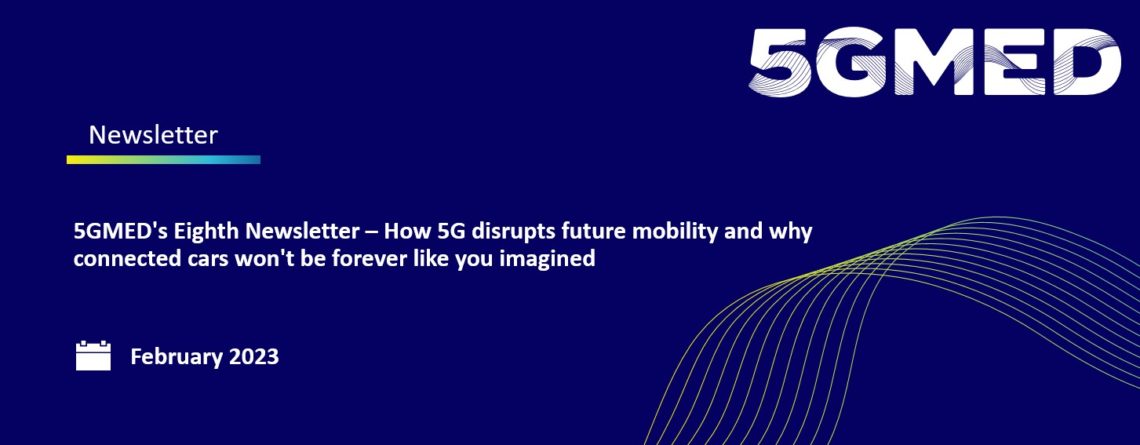8th Newsletter – February 2023: How 5G disrupts future mobility and why connected cars won’t be forever like you imagined
SUBSCRIBE TO THE 5GMED NEWSLETTER HERE!
Imagine crossing the border between Spain and France, and suddenly your attention is drawn to a car driving itself without the driver’s hands on the steering wheel. At first, fear for the person’s safety may come to your mind, but the driver appears as calm as the sea. It turns out that the car is being controlled remotely by someone sitting comfortably more than 200 km away in Castellolí, using a 5G remote-control steering wheel.
What does this mean? Connected mobility is becoming a reality, and autonomous vehicles will soon circulate our roads.
5GMED at MWC23: Experts discuss how Europe and Spain face the challenge of connected mobility
We all know the key is technology: 5G, smart sensors, CV2X, MNO… the list could be endless. But what about the challenges of having these autonomous vehicles running on our streets for real?
Experts from EIT Urban Mobility, Cellnex Telecom, i2CAT Foundation and Mobile World Capital Barcelona will gather at the Mobile World Congress 2023 in Fira Barcelona to discuss how Europe and Spain are facing the challenge of connected mobility. If you are attending the Congress, we invite you to go to booth 6B31 on Tuesday, 28 February, at 14:45h to join their discussion; if you aren’t, we will share the streaming link to watch it on our social media. Don’t worry! We’ve got you covered!

Europe’s 5G cross-border corridors for Connected and Automated Mobility are transforming industry and society
Let’s return to that car you saw crossing the Spanish-French border. How can it be remotely controlled even when entering a different country? European countries and industries are cooperating in preparing the large-scale deployment of 5G corridors for Connected and Automated Mobility on European transport paths. The European Commission defined digital cross-border corridors, where vehicles can physically move across borders, and cross-border road safety, data access, data quality and reliability, connectivity and digital technologies can be tested and demonstrated.
At 5GMED, we have prepared a short series of five articles to help you understand how these 5G cross-border corridors will change your experience in mobility:
- What are Europe’s 5G cross-border corridors?
- How to reach sustainable mobility and improve traffic safety?
- Which are the challenges of 5G in cross-border?
- Which are the European cross-border initiatives?
- These are the technological enablers for cross-border solutions
You are now aware of the 5G corridors, but have you ever heard about the Mediterranean Corridor? It runs along the Figueres-Perpignan cross-border between Spain and France. It is the corridor in which the 5GMED Project aims to bring a sustainable 5G deployment model for future mobility.
In fact, at the beginning of February, we went to the Circuit of Castellolí and the LINEA FIGUERAS PERPIGNAN S.A. facilities to demonstrate small-scale pilots. This demonstration aimed to showcase the project’s progress to the European Commission delegation with innovative solutions for remote driving, road infrastructure digitalization, follow-me infotainment and railway communications.
The results of these tests represent an essential step forward in developing cutting-edge technology and prove the potential for 5G to transform industries and society as a whole in cross-border scenarios. Ultimately, the autonomous vehicle you imagined at this newsletter’s beginning won’t be in your imagination forever.
SUBSCRIBE TO THE 5GMED NEWSLETTER HERE!
This newsletter was originally published on LinkedIn.


